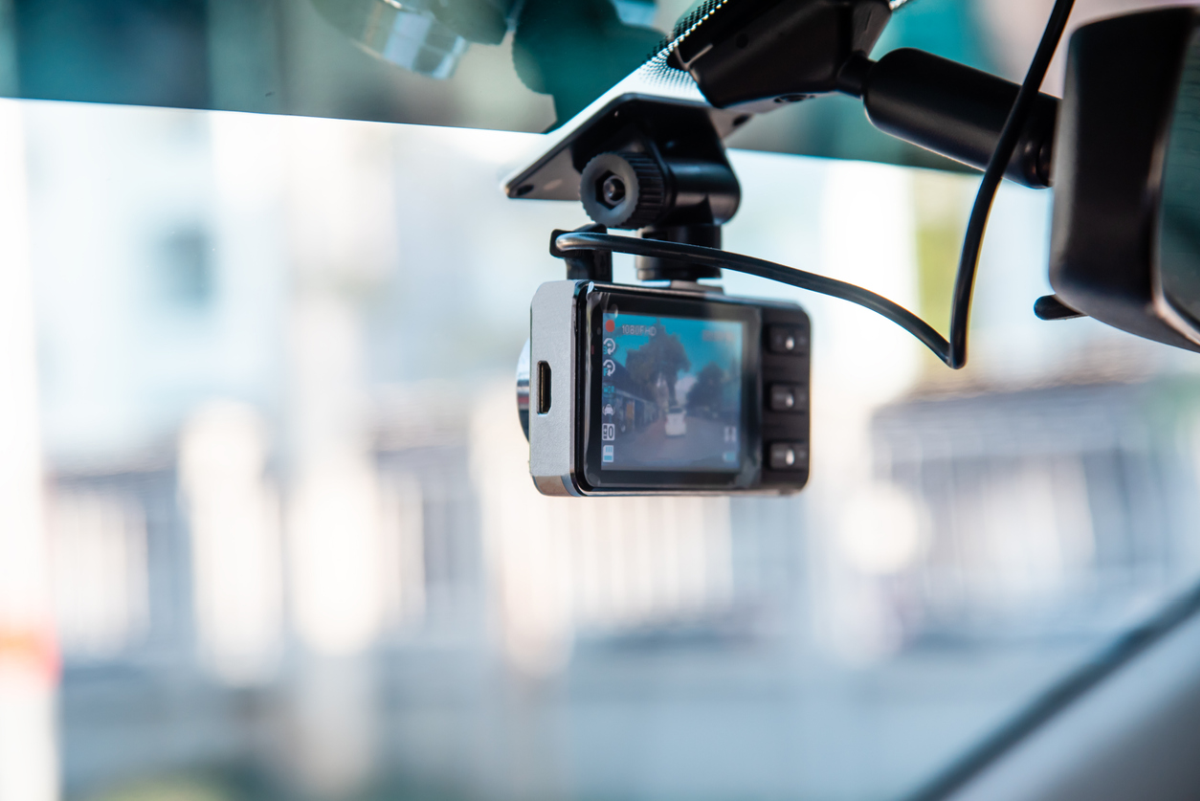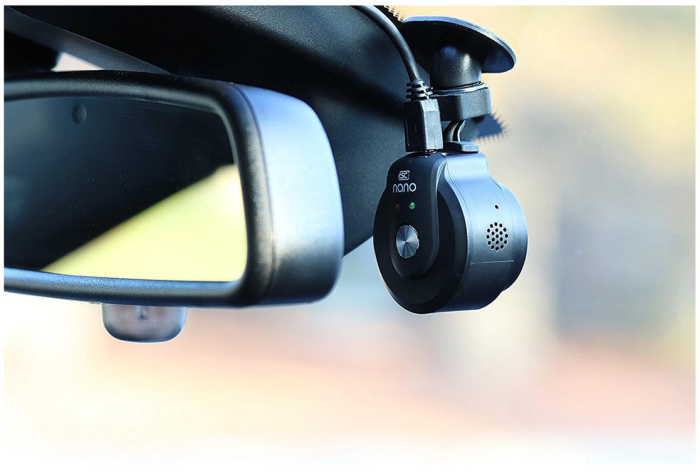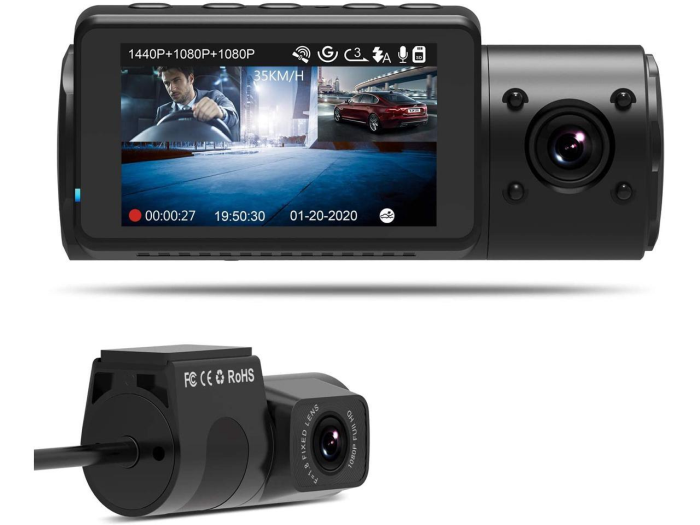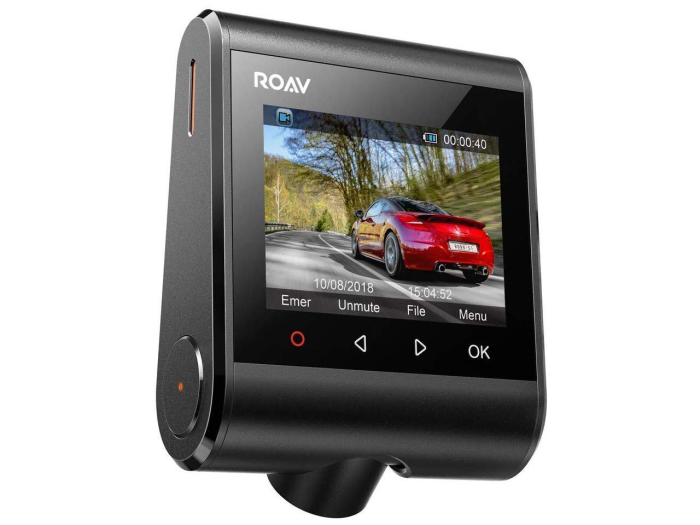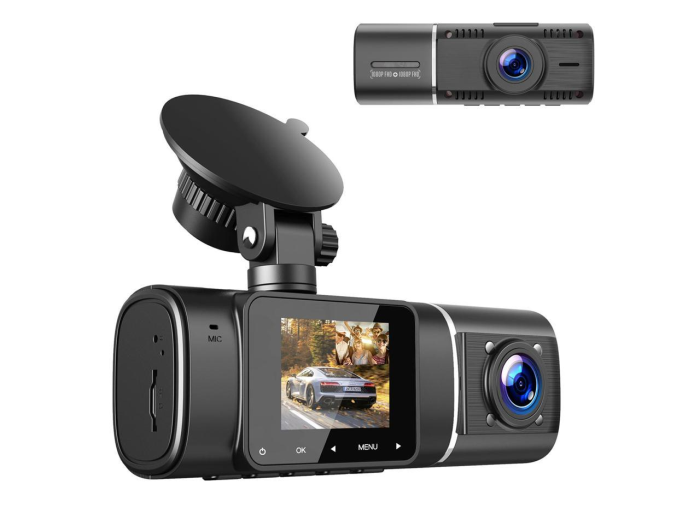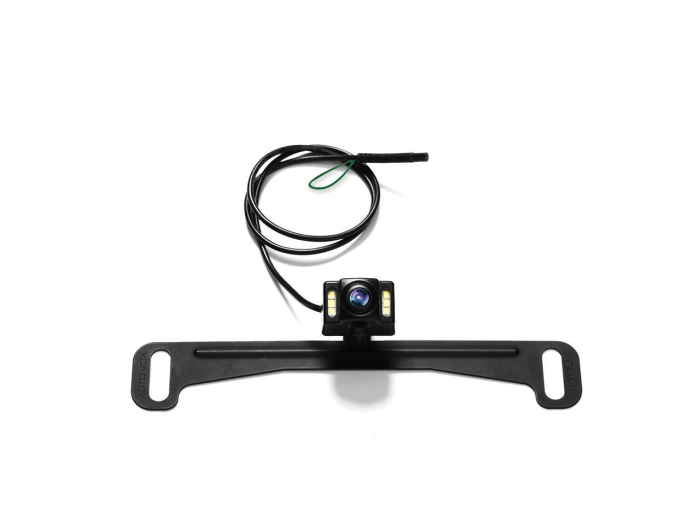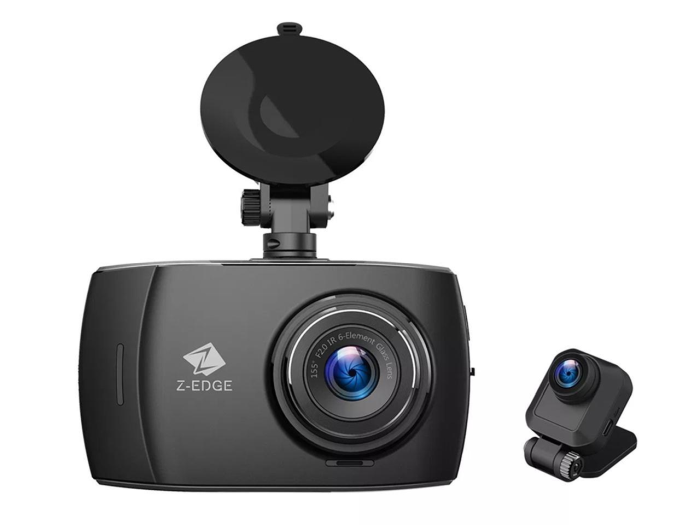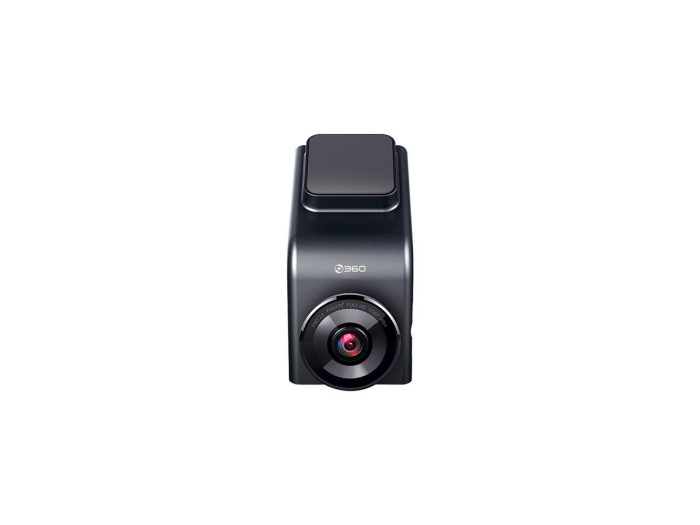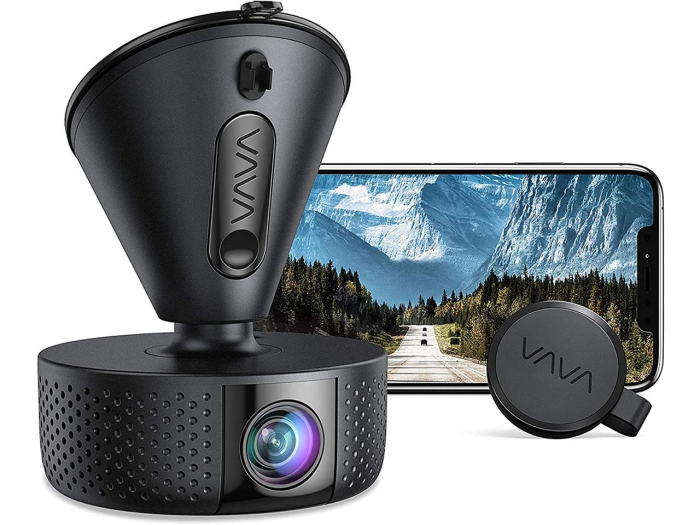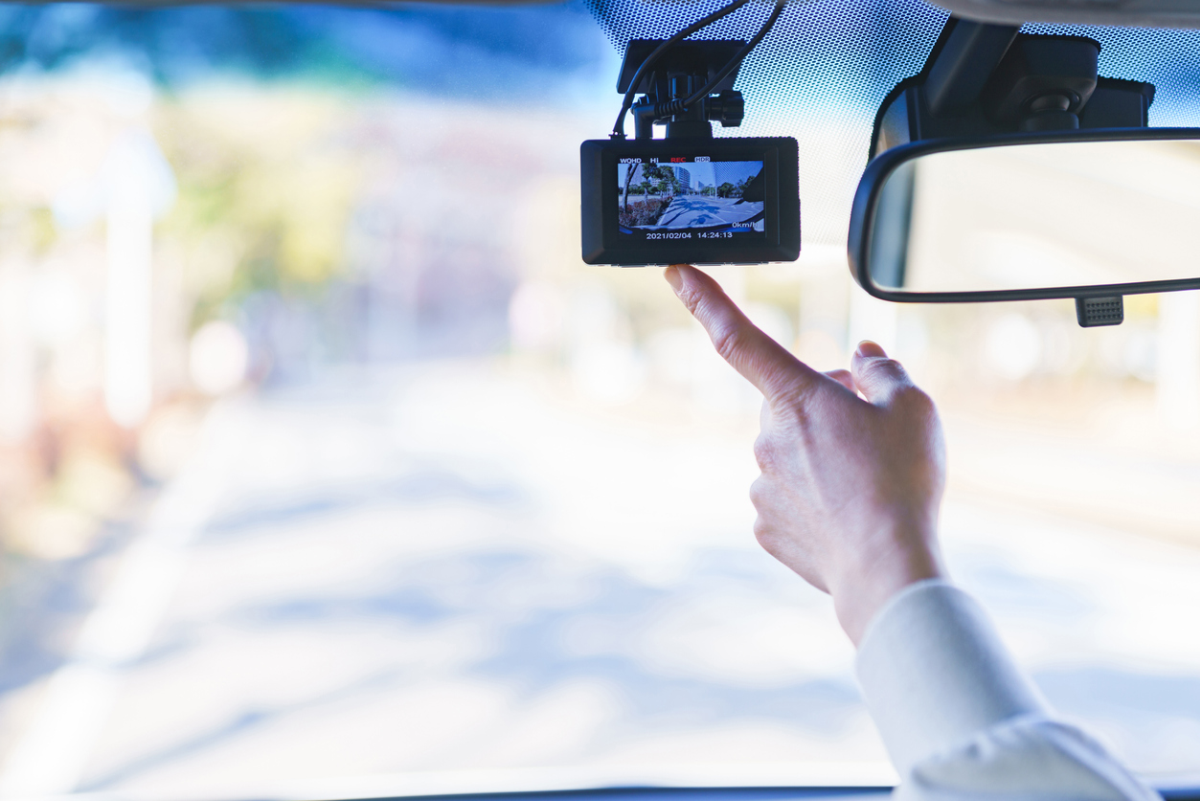
Car cameras are incredibly useful devices, but some would-be users shy away thinking the installation process is too complicated to do on their own. While it’s true that no two installation processes are going to be exactly the same based on different models of cars and dash cams, there are still some tips, tricks, and advice we can share that should make the set-up process smooth sailing . . . but in a car.
Where to mount a dash cam
The first decision you need to make is where you’re going to mount the camera. The ideal position for most forward-facing dash cams (unless specifically designed otherwise) is mounted to the windshield, just behind the rearview mirror as seen here with this RSC Nano.
Legal Restrictions
That’s ideal. However, some states have laws regarding where you can mount cameras for your car. Many prohibit you from mounting on the windshield, some states only say that the car camera “must not obstruct the driver’s view.”
Hopefully you considered this and reviewed your local laws before you purchased your camera. If you have yet to purchase your dash cam, be sure you understand the laws in your state and read through our buying guide so you can find the best camera for your needs.
Framing
Your front camera should have a 60/40 sky/road ratio, and be mounted as close to center as possible, failing that it should favor the driver’s side. If you can mount it directly behind your rearview mirror that is ideal, but before you begin you should remove the rearview mirror from its mount so you can more easily view the camera’s framing while positioning.
Screen Visibility
Another consideration is screen visibility. If you need to be able to check the screen while driving. like if your using a system similar to the Vantrue N4 and includes a backup camera, then tucking it behind your rearview mirror isn’t ideal. You’ll need to place the camera such that your screen isn’t blocked from your view when you need it.
Power
Another placement consideration is how you plan to power your onboard camera. Many dash cams feature a battery but that’s mostly for situations when vehicle power is unavailable and are not meant to be the primary power supply.
Primary power is primarily provided one of three ways: Auxiliary power outlet (aka “car outlet,” “12V socket,” or “power port”), USB, or hardwired directly into your fuse box. In any of these cases you’re going to have wires that you’ll need to route (or let dangle, but this isn’t ideal and is likely illegal in your area).
Most power cords tuck neatly into the seams of your vehicle’s interior without needing to remove panels. Depending on your car, the power source you’ve chosen and the camera you’re installing you may need a prying tool, or cable extensions.
Shop through all our Onboard Camera Systems
Position
If you’re unable to mount your camera behind the rearview mirror, there are still options, and some cameras for your car are specifically designed to be mounted elsewhere.
Front
Other than the behind the rearview mirror there are basically two spots for your forward-facing dash cam. The first is directly in front of the driver near where the windshield meets the dash. This offers a decent replication of the driver’s POV, and can be mounted either on the windshield or the dash. This is a great position if your camera features a built-in GPS, and has the added benefit of bringing the camera closer to your power sources.
There are problems with this position too. It might count as an obstruction in the eyes of the law, and it’s not ideal from a coverage angle standpoint, as it favors the driver side, potentially leaving you with a passenger side blind spot. This spot is also a no-go if your forward-facing camera has an interior camera built into it unless all you want to film is the driver.
Another option is to keep the camera in the center of the vehicle but rather than mounting it high behind the rearview, you mount it low, near where the windshield meets the dash. You still have the option of mounting on the glass or on the dash, and you can still see an integrated GPS, but with this position a built-in interior camera also has a functional angle.
This position isn’t flawless either. It makes your dash cam pretty apparent which isn’t ideal and while it is still fairly close to your power sources, there aren’t as many ways to hide or stow the cables.
We have Car Care Products to keep your ride looking fresh off the lot
Interior
In most instances as with this TOGUARD camera your interior facing camera’s mounting is going to be tied to the placement of your forward-facing dash cam. Because of that your best bet for finding the ideal position and framing lies with reading your camera’s instructions. That plus a little trial and error should find you a suitable angle for recording as much of the interior as possible.
On the off chance that you purchased a system with a discrete interior camera, you’ll want to make certain that you’re mounting it in a place with access to power. You’ll want it to have a useful vantage point. And you’ll want to have it mounted in such a way so as not to draw a great deal of attention to it.
Clipped to an air vent might give you the coverage you need but it can also stick out to anyone peeking inside your parked ride. See if you can work with a lower angle on the center console first, then experiment.
Rear
Some options are going to be pretty easy, like this license plate camera from Auto-Vox. Others will be very particular to your camera and vehicle. The good news is that means you should have clear instructions. The bad news is that we can’t really offer much advice other than shop carefully.
Some rear camera installs are a single screwdriver affair, while others require power drills and more. Remember that if it feels too complicated to do yourself, there’s no shame in letting the pros handle it. There is, however, more cost.
We’ve got the parts, tools, and equipment for your Automotive & Powersports needs
How to mount and set up a dash cam
Knowing where you’re going to mount a dash cam and how you’re going to wire its power is half the battle. The other half of the battle is securely mounting the camera and positioning it to achieve the best angle.
Remember, “best angle” is a largely relative term but there are some broad strokes guidelines.
Mount Type
There are basically two options when it comes to the actual mounting mechanism for your camera. Suction cup mounts or adhesive. They both have their advantages and disadvantages, and some cams will offer both.
If this is your first dash cam rodeo, we recommend starting with a suction cup mount like the one that comes with the Z-EDGE T4 dash cam. They are very forgiving when it comes to mounting. You can mount the camera, take a picture, check the angle, and if you need to adjust further, you can simply undo the suction cup.
This is also useful when road tripping between states with different dash cam laws as it allows you to change its position ad infinitum (though we recommend finding out which state on your route has the strictest laws and just mount the camera accordingly at the start of your trip).
Adhesive mounts like the ones included with this 360 Smart Network camera are more permanent. You can maybe tweak the position once or twice but eventually the adhesive will either lose its effectiveness or stick so securely you won’t be able to pull it up without ruining the glue.
The one advantage adhesives have of their suction centric siblings is longevity. Under most conditions an adhesive mount is more capable of clinging to its spot, while suction cup stands tend to lose their suction and slide or fall out of place. Adhesives sometimes struggle in extreme heat or cold, so if those be your conditions you might want to make other considerations.
Car Electronics can add comfort and functionality to your ride
Forward Facing Camera
For most drivers this is the most crucial cam. Make sure you understand the laws regarding dash cam placement in your area, and make sure you understand the instructions accompanying your camera. If the camera includes a screen that you want to be able to see while driving, make sure you’re keeping that eyeline in mind.
An easy solution to eyeline problems is getting an onboard camera that displays on your smartphone like the VAVA VD004. This not only provides you with a larger screen but you can also mount you phone separately from the camera in an easier to see location.
Using a cellphone as your display can also make mounting your camera easier, as you can simply use the phone screen to check it’s positioning rather than craning your neck to try and check a small possibly obscured screen.
The biggest piece of advice we can offer here is: Be not proud. A second pair of hands can mean the difference between an easy install and an afternoon of frustration.
Interior Cam Mounting
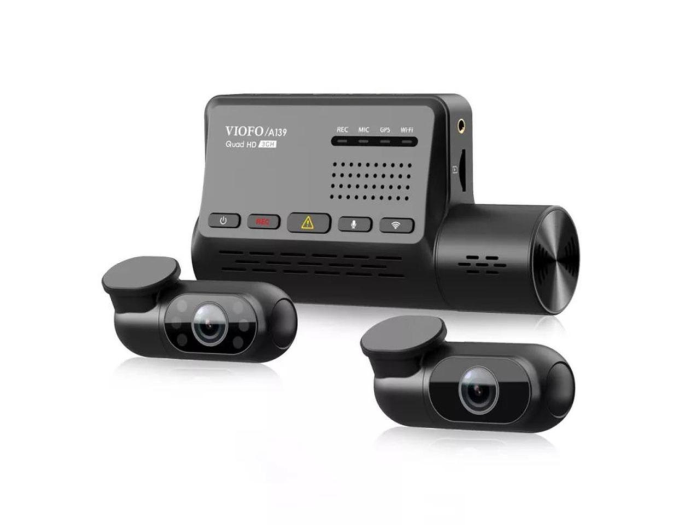
VIOFO A139 sounds like an old timey telephone number
If the interior camera is its own entity as is the case with the VIOFO A139, then the only guidelines are practical. Can the camera see everything you want it to record? Is it secure? Does it have access to power? If a position satisfies those three criteria, you’ve found a working angle for your camera.
If it’s integrated into your forward-facing vehicle camera, then getting the positioning of the interior dash cam is more restricted. If you must sacrifice one angle for the other, we recommend prioritizing the view of the road over a view of the passengers, but your priorities may be different.
Rear Mounting
You’ll probably have the least input regarding the location of a rearward facing car camera. There are generally only a few places they can go. Do your research before you buy and don’t invest in a device with a complicated installation unless you’re confident in your ability to execute or willing to pay a pro.
For more involved projects we’ve got plenty of Automotive Tools & Equipment
Software
The final step in your setup is software. For many cameras this is a simple matter of reading the instructions and adjusting the camera settings to your preferences. Though some cameras come with robust software that can be installed on your computer for even greater control.
Of course, as we touched on earlier, many cameras like the Rexing V1P-4K are accompanied by an app that can make the whole experience a lot more convenient. An app that lets you use your phone as the display can make your camera position easier to check when mounting (especially when mounting behind the windshield), it’s easier to see, and easier to store and share camera capture.
In many cases this app can also integrate with your phone’s GPS to record your location, trajectory, and velocity in conjunction with video. That kind of information can be crucial in the aftermath of a collision or when contesting a ticket.
Final thoughts
Dash cams are very useful devices and with few exceptions they can be set-up easily in near any vehicle. The number one thing you can do to set yourself up for a successful installation is research. Know the law in your state, the power source you plan to connect to, and mounting methods included with your camera.
If you enter with a well informed plan of attack, you should be in, out, and recording on easy street before you know it.
Around the house, at the office, or on the road Newegg has what you need

